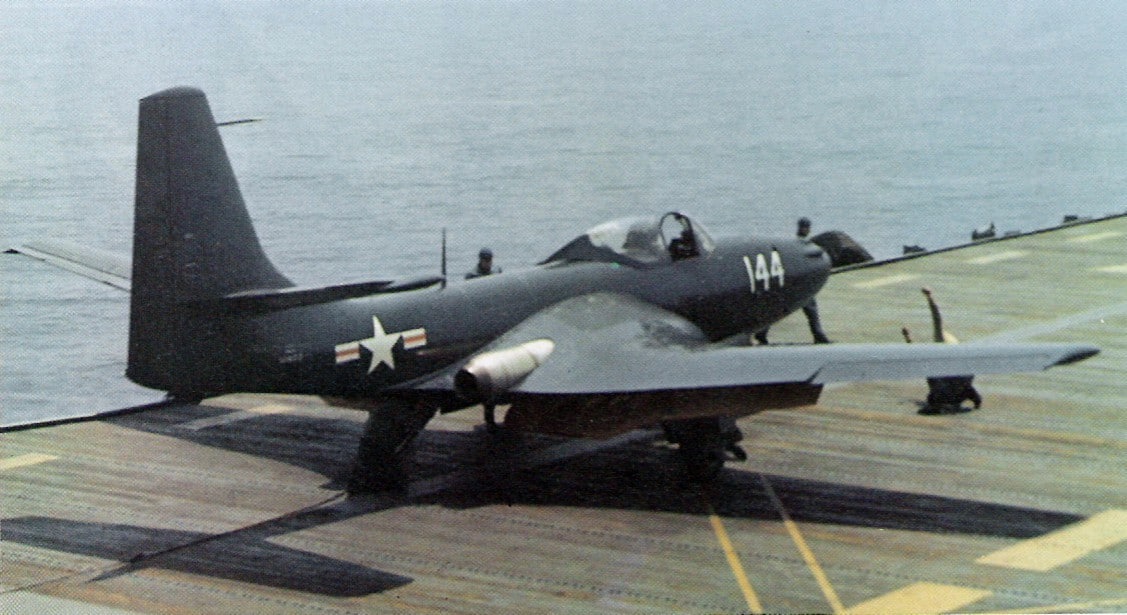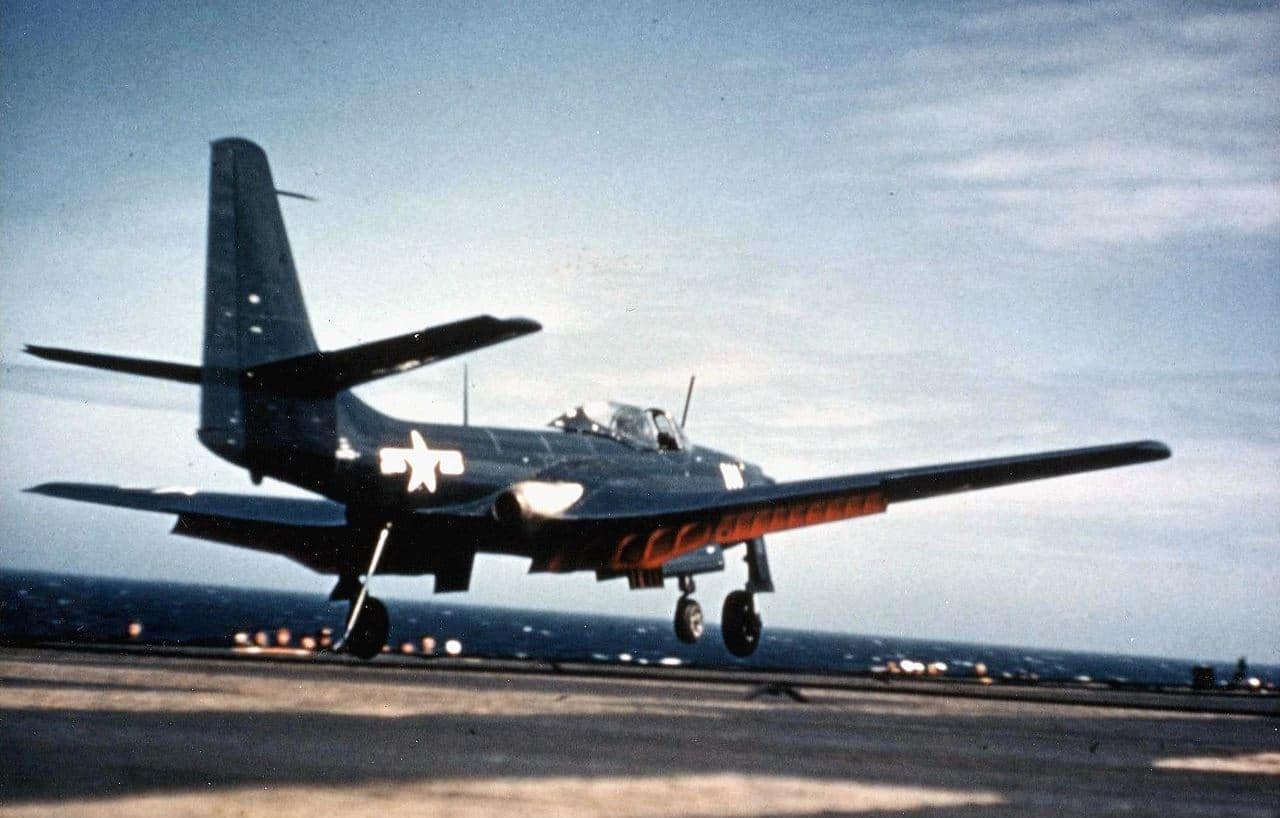Gray Angels Take Flight
VF-17A didn’t take long to get the Phantom to sea. They deployed aboard the light carrier USS Saipan (CVL-48) during May of 1948. The Gray Angels, three Rear Admirals (Daniel V. Gallery, Apollo Soucek, and Edgar A. Cruise) flying Naval Air Test Center Phantoms, were one of the first jet demonstration teams in existence- even before the Blue Angels, who flew Grumman F8F Bearcats at the time. The Grey Eagles disbanded after a near mishap at Cleveland and their jets were subsequently assigned to Test and Evaluation Squadron THREE (VX-3).

Leatherneck Phantoms
Only two Marine Corps squadrons operated Phantoms. Marine Fighter Squadron ONE TWO TWO (VMF-122) Crusaders and VMF- 311 Tomcats operated FH-1s. VMF-122 formed a flight demonstration team too, dubbed the Marine Phantoms and then the Flying Leathernecks, while flying Phantoms. Production of the McDonnell FH-1 Phantom ended during May of 1948 after a total of 62 airframes were completed.

A Short But Important-Timer
The Phantom jet could not carry or deliver bombs and experience dictated that any naval aircraft capable of carrying bombs became a force multiplier. The margin between the FH-1s performance and propeller-driven fighters of the day was not great enough. Other contemporary jets outperformed it. The jet also could not be modified to mount an ejection seat. The location of the forward-firing machine guns even caused the pilot to be flash-blinded by the muzzle blast. These limitations and the development of both the McDonnell F2H Banshee and the Grumman F9F Panther spelled a short service life for the first Phantom– the FH-1.

Limited Capability = Quick Replacement
FH-1s couldn’t really do much for weapons training (no bombs) but were used for initial jet-powered transition and carrier qualifications for future Banshee and Panther pilots. VF-17A (by then VF-171) transitioned to the McDonnell F2H-1 Banshee in June of 1949. Their Phantoms went to VF-172 Checkmates for a short time before all FH-1s were replaced and transferred to Naval Reserve units around the country by November of 1949. Phantoms had been replaced by the time the Korean War broke out so they never saw combat. FH-1 Phantoms were completely gone from service by the end of July 1954.

